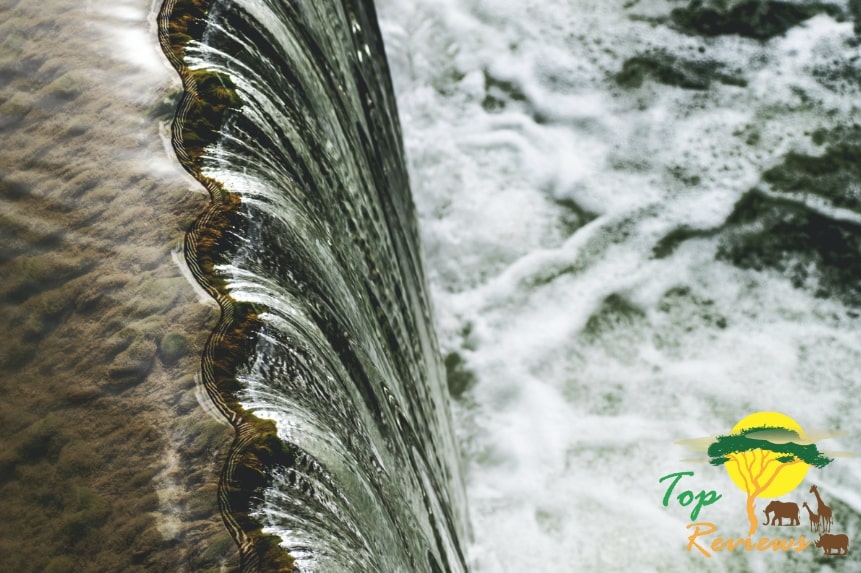Categories > Guides and Tips

A Deep Dive Into The Gariep Dam: South Africa’s Biggest Dam
- What's the biggest dam in South Africa?
- How long is the Gariep Dam?
- Why was the Gariep Dam built?
- Where does the water in the Gariep Dam come from?
- Who manages the Gariep Dam?
- What is the impact of the Gariep Dam on the surrounding environment and communities?
- Because of the irrigation that the dam provides, it has contributed to food security and economic development in the area.
- The dam has created tourism opportunities and contributed to the local economy.
- The Gariep Dam caused the displacement of communities.
- It altered the natural flow of the Orange River and its ecosystem.
- It has contributed to water scarcity.
Did you know that because of its arid climate, South Africa is particularly vulnerable to water scarcity?
Water dams play a crucial role in mitigating these challenges by capturing and storing water during times of surplus and releasing it during times of drought.
According to the Department of Water and Sanitation, South Africa has more than 5,000 large and small dams, with a total storage capacity of approximately 32.3 billion cubic metres.
Here, we take a closer look at South Africa’s biggest dam. Read on to learn more!
What’s the biggest dam in South Africa?
The biggest and deepest dam in South Africa is the Gariep Dam. It’s on the Orange River, located on the border between the Free State and Eastern Cape provinces.
Built in 1965, the Gariep Dam has a capacity of 5,349,600 megalitres. The word “gariep” in Khoekhoe means “river” or “big water”.
How long is the Gariep Dam?

The Gariep Dam is 914 metres long. It covers around 352 million square metres of land in South Africa.
Why was the Gariep Dam built?

The Gariep Dam was built to tackle a variety of needs, including irrigation, hydropower, and water supply for domestic and industrial use in the surrounding areas.
In fact, it’s the biggest storage reservoir in South Africa, with a whopping capacity of over 5 billion cubic metres of water!
The dam is a lifeline for the agricultural areas surrounding it, where farmers rely on its water to grow crops such as maize, wheat, and lucerne.
But that’s not all – the Gariep Dam also boasts a hydroelectric power station, which generates up to 360 MW of electricity. It’s amazing how much power can be harnessed from the flow of water, isn’t it?
Last but not least, the Gariep Dam is a vital source of drinking water for several municipalities in the Free State and Eastern Cape provinces. Without this dam, many people in these regions would struggle to access clean drinking water.
Where does the water in the Gariep Dam come from?

The water in the Gariep Dam comes from the Orange River, which is the longest river in South Africa.
The river has its origins in the majestic Drakensberg Mountains in Lesotho, and meanders westward, eventually spilling into the Atlantic Ocean.
However, the water level in the dam can be impacted by a host of factors, including rainfall, drought, and upstream water use. So, it’s crucial to monitor the flow of the river closely to ensure that there’s always enough water to go around.
While the Orange River is the primary source of water for the Gariep Dam, it also receives water from the Caledon River and a few other smaller tributaries.
These sources do contribute some water to the dam, but they pale in comparison to the mighty Orange River.
Who manages the Gariep Dam?

The Department of Water and Sanitation (DWS), the government agency responsible for water resource management, oversees the management of the Gariep Dam through its regional office in the Free State province.
To adhere to the National Water Act of 1998, the DWS conducts regular inspections and maintenance activities, such as dredging, embankment stabilisation, and spillway maintenance, to ensure the safe and effective operation of the Gariep Dam.
The agency also monitors the water levels in the dam and the upstream and downstream rivers to assess the availability and quality of water resources.
Moreover, the DWS collaborates with other government agencies and stakeholders to develop and implement water resource management plans for the Orange River Basin, which encompasses the Gariep Dam and its surrounding areas.
These plans aim to balance the competing demands for water resources and promote sustainable water use practices. The DWS has also implemented a dam safety monitoring program for all large dams in South Africa, including the Gariep Dam.
This program involves regular inspections, risk assessments, and emergency preparedness plans to ensure the safety and integrity of the dam.
What is the impact of the Gariep Dam on the surrounding environment and communities?

Truth be told, the Gariep Dam has had both positive and negative impacts on the surrounding environment and communities.
1. Because of the irrigation that the dam provides, it has contributed to food security and economic development in the area.
In addition, the electricity generated through the hydroelectric power station plays a vital role in increasing South Africa’s energy security and reducing its reliance on fossil fuels.
2. The dam has created tourism opportunities and contributed to the local economy.
It’s become a popular destination for recreational activities such as fishing, boating, and camping.
3. The Gariep Dam caused the displacement of communities.
The construction of the dam caused thousands of people to be removed from their homes and farms. The affected communities were relocated to new areas, causing social and economic disruption.
4. It altered the natural flow of the Orange River and its ecosystem.
This has affected the migration patterns of fish and other aquatic species, as well as led to the loss of habitats and the introduction of invasive species.
5. It has contributed to water scarcity.
The water is primarily used for irrigation and urban supply in the upstream areas, contributing to water scarcity for downstream communities that depend on the river for their water supply and livelihoods.





